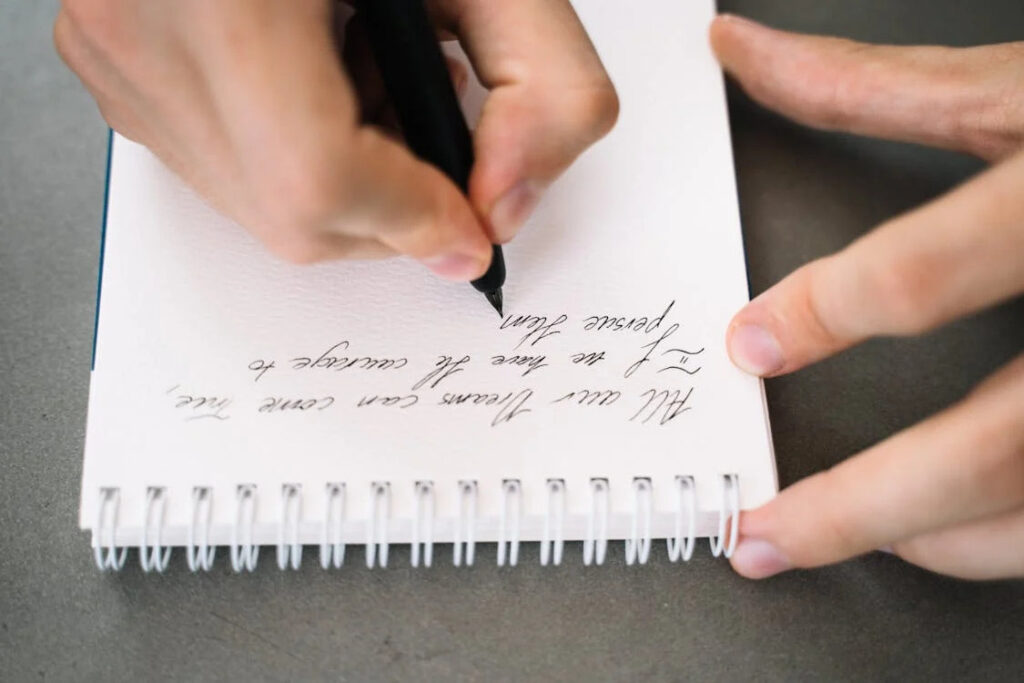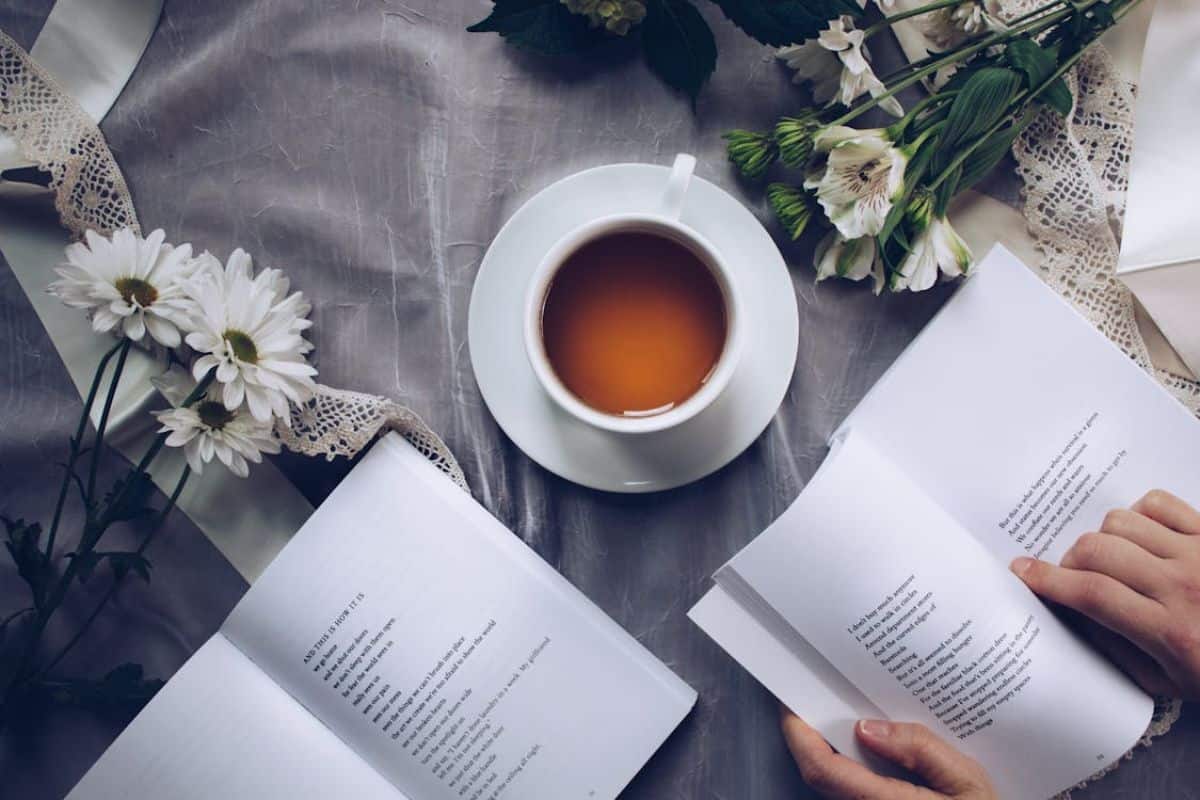Poetry speaks in riddles and whispers, metaphors and music.
Yet sometimes, we need to translate these artistic expressions into clear, straightforward language.
That’s where paraphrasing comes in—it’s your bridge between poetic complexity and everyday understanding.
What Does It Mean to Paraphrase a Poem?
Imagine trying to explain a beautiful sunset to someone who’s never seen one.
You’d need to capture both the literal details and the emotional experience.
Paraphrasing a poem works the same way.


Never Worry About AI Detecting Your Texts Again. Undetectable AI Can Help You:
- Make your AI assisted writing appear human-like.
- Bypass all major AI detection tools with just one click.
- Use AI safely and confidently in school and work.
It’s not just about swapping fancy words for simple ones; it’s about preserving the heart of the poem while making its meaning crystal clear.
When you paraphrase effectively, you’re like a skilled translator working between two languages: the language of poetry and the language of everyday speech.
Your goal is to help others see the sunset just as vividly as you do, even if you’re using different words to describe it.
Why Paraphrase a Poem?
Poetry has a reputation for being difficult, and sometimes that reputation is well-earned.
Poets love to layer meaning upon meaning, creating works that can seem impenetrable at first glance.
Paraphrasing serves as your first step toward deeper understanding.
Students often struggle with poetry analysis because they try to interpret before they understand.
It’s like solving a complex math problem without knowing what the numbers mean.
Paraphrasing helps you establish that crucial foundation of basic comprehension.
Teachers and poetry enthusiasts use paraphrasing to make poems more accessible to others.
It’s particularly useful when introducing complex works to new readers or when helping students grasp challenging material.
Think of it as creating a clear path through a dense forest – you’re not changing the forest, just making it easier to navigate.
How to Paraphrase a Poem Effectively
Paraphrasing a poem can open up new layers of understanding by transforming poetic language into clear, straightforward terms.
This process will deepen your appreciation and insight, making complex poems easier to understand and discuss.
1. Analyze the Poem’s Meaning
The first step might seem obvious, but it’s crucial: read the poem multiple times.
Your first reading should be like taking in a landscape – don’t worry about the details, just get a feel for the territory.
During your second reading, start marking spots that puzzle you or seem significant.
By your third reading, you should be ready to start making connections between different elements of the poem.
Words in poetry often carry multiple meanings, so keep a dictionary handy.
Even familiar words might surprise you with alternative definitions that better fit the poem’s context.
Historical context matters too – a word’s meaning might have shifted since the poem was written.
2. Identify Key Themes and Imagery
Poetry works through images, emotions, and ideas woven together like threads in a tapestry.
Before you start paraphrasing, spend time understanding how these elements work together.
Notice how certain images repeat or transform throughout the poem.
Pay attention to the emotional journey the poet creates.
Consider the historical and cultural context, too.
A rose meant something different to Shakespeare than it does to modern readers.
Understanding these contexts helps you make better choices when paraphrasing.
3. Rephrase Line by Line for Clarity
Now comes the detailed work of paraphrasing.
Start with individual lines, writing out their literal meaning while noting any figurative language.
Sometimes, a single line contains multiple layers of meaning – don’t rush to simplify them away.
For instance, when Emily Dickinson writes, “Hope is the thing with feathers,” you’ll want to explain both the literal comparison to a bird and the deeper implications of hope’s resilient, uplifting nature.
Good paraphrasing preserves these layers while making them more accessible.
4. Paraphrase Entire Stanzas
Moving from lines to stanzas requires careful attention to how ideas flow and develop.
Each stanza usually represents a complete thought or stage in the poem’s progression.
Your paraphrase should maintain these logical connections while clarifying the meaning.
Consider how the stanzas build upon each other.
A good paraphrase shows this development clearly, helping readers understand both the individual parts and how they fit into the whole.
5. Use Synonyms and Alternative Phrasing
Choosing the right words for your paraphrase requires careful balance.
You want to simplify without losing the poem’s sophistication.
Modern words can work well, but avoid anything too casual or colloquial.
Your goal is clarity, not modernization.
Word choice affects tone significantly.
If you’re paraphrasing a serious poem about loss, using light or playful language would be inappropriate.
Match your vocabulary to the poem’s emotional register.
6. Ensure You Preserve the Poem’s Essence
The heart of a poem isn’t just in its literal meaning.
Poems create experiences through their combination of sound, imagery, and ideas.
While your paraphrase won’t retain the original’s musical qualities, it should still capture its emotional and intellectual impact.
Think about the poem’s key metaphors.
Don’t just translate them literally – explain how they work to create meaning.
If a poet compares love to a rose, discuss both the beauty and the thorns implied by this comparison.
7. Review and Compare with the Original
After completing your paraphrase, step back and compare it with the original poem.
Does your version capture the main ideas clearly?
Have you maintained the poem’s essential character while making it more accessible?
Make sure you haven’t oversimplified complex ideas or lost important nuances.
This review stage is crucial for catching any misinterpretations or oversights.
It’s also a good time to check that your paraphrase flows naturally while staying true to the original’s intent.
Why Paraphrasing a Poem Is Different from Other Paraphrasing
Paraphrasing poetry requires a unique sensitivity to artistic expression.
Unlike academic texts or news articles, which primarily aim to inform, poems create meaning through delicate techniques such as metaphor, rhythm, and cultural allusion.
When paraphrasing a poem, it’s essential to respect these elements, translating them into accessible language without stripping away the poem’s subtlety or richness.
Poets often use intentional ambiguity, leaving room for multiple interpretations.
For instance, a single line might carry a metaphor, an emotional tone, and a rhythmic structure that together convey a layered meaning.
When paraphrasing, aim to reveal these layers rather than imposing a single interpretation.
Explain the various possibilities, acknowledging how each interpretation could contribute to the poem’s overall meaning.
Effective paraphrasing of poetry captures not just the literal meaning but the nuances that make the poem resonate, helping readers connect with the poet’s intent in a way that remains true to the original work’s artistry and depth.
Paraphrasing vs. Quoting: Key Differences

Deciding between paraphrasing and quoting depends largely on your purpose.
Quoting preserves the poet’s exact words, making it essential when analyzing specific literary techniques, word choices, or powerful lines that capture the poet’s voice.
It allows you to show exactly how the poet achieves their effects, drawing attention to stylistic choices like rhythm, rhyme, or alliteration that contribute to the poem’s impact.
On the other hand, paraphrasing often works better when you’re aiming to explain the poem’s overall meaning or to connect themes across different sections.
A good paraphrase captures the essence of the lines in more straightforward language, making complex ideas accessible and digestible.
In a balanced analysis, combining both approaches can be most effective.
Quoting gives readers a sense of the poet’s original voice and style, while paraphrasing helps clarify deeper meanings and interpretations.
Together, they allow for a richer, more insightful discussion of the poem.
Paraphrasing vs. Summarizing a Poem: When to Use Each
While paraphrasing and summarizing might seem similar, they serve different purposes.
Paraphrasing maintains most of the original’s detail and structure, just in simpler language.
Summarizing condenses the poem into its essential points, leaving out many specific details.
Use paraphrasing when you need to explain particular passages or stanzas in detail.
Turn to summarization when you want to give readers a quick overview of the poem’s main themes or story.
Can You Use AI Tools to Paraphrase Poems?
Modern AI tools like Humanizer AI by Undetectable AI can be a powerful asset when paraphrasing many things, especially poems.
Humanizer AI excels at suggesting alternative phrasings, simplifying complex sentences, and checking for unintentional plagiarism, all while maintaining an authentic, human-like tone.
Poetry often relies on layered nuances—such as metaphor, rhythm, and emotional undertones—that Humanizer AI skillfully assists with by providing fresh, rephrased perspectives.

For example, Humanizer AI can offer unique ways to phrase lines, refine language, or even propose insightful interpretations.
This approach allows you to see different angles of the poem, making it an ideal tool for those beginning to explore poetry or those looking to refine their language.
By pairing Humanizer AI’s phrasing expertise with your personal insights, you create a balanced approach to paraphrasing, with AI providing phrasing support while you capture the poem’s deeper meanings.
Using Humanizer AI by Undetectable AI for your paraphrasing needs offers a helpful boost in understanding poetry, allowing you to appreciate the artistry while bringing it to life in fresh, accessible language.
Check it out – use the widget below!
Examples of Well-Paraphrased Poems
Let’s examine how effective paraphrasing works with a famous example. Consider Robert Frost’s “The Road Not Taken” (first stanza):
Original:
“Two roads diverged in a yellow wood,
And sorry I could not travel both
And be one traveler, long I stood
And looked down one as far as I could
To where it bent in the undergrowth;”
A strong paraphrase might read:
“The narrator finds themselves facing a choice between two paths in an autumn forest. They feel regret at being unable to explore both routes, since they must choose just one. They spend considerable time studying one path, trying to see where it leads, but their view is limited by the curve in the trail and the thick vegetation.”
This paraphrase succeeds because it:
- Maintains the autumn setting and physical details
- Captures the speaker’s emotional state
- Preserves the essential conflict of choice
- Explains the physical limitations described
- Keeps the focus on the decision-making moment
Conclusion
Paraphrasing poetry is a delicate balance between preservation and translation.
It requires patience, attention to detail, and a deep respect for the original work.
Through careful paraphrasing, you can reveal the poem’s underlying meaning while preserving its power to move and inspire.
A helpful approach is to start small—perhaps with a single stanza—and gradually build your skills.
Good paraphrasing isn’t about replacing the original poem but rather illuminating it.
With practice, you’ll develop an eye for the essential elements that make each poem unique and meaningful, bringing out its richness for others to appreciate.
For those working on improving their paraphrasing skills, Humanizer AI by Undetectable AI can be a valuable assistant.
From paraphrasing essays to poems, suggesting alternative phrasings while maintaining a natural, human-like tone.
It’s an excellent tool to have as you refine your work, helping you find fresh ways to approach language without losing the poem’s essence.
As you continue exploring poetry, remember that paraphrasing isn’t just about making poems easier to understand—it’s about deepening your appreciation for the craft itself.
With each paraphrase, you unlock new layers of meaning, bringing the poet’s artistry to life in a way that resonates with others.
Try AI Humanizer by Undetectable AI today to enhance your paraphrasing journey and elevate your understanding of poetic language.
